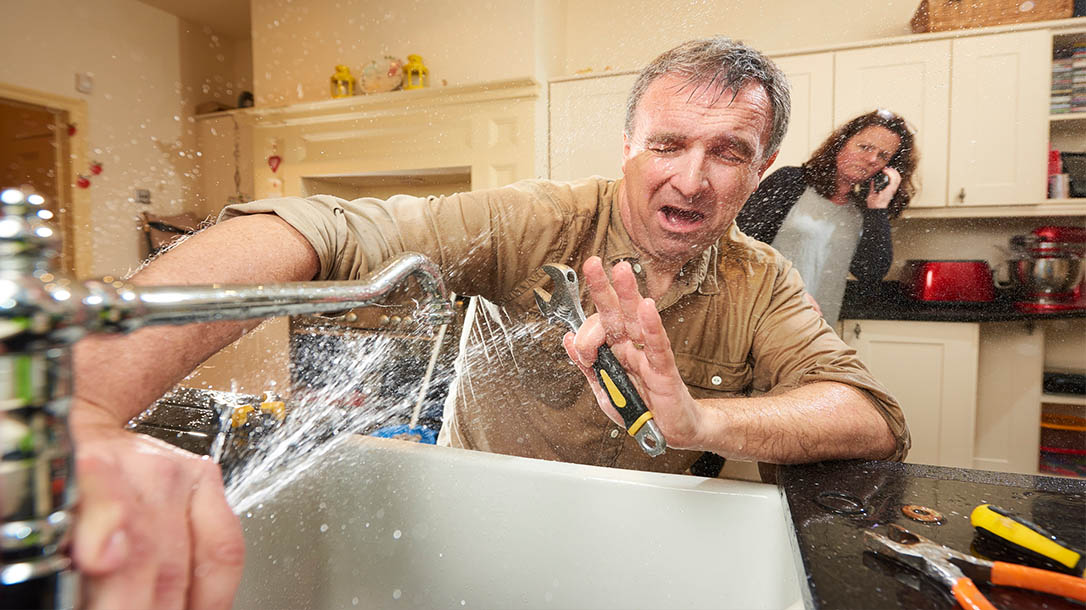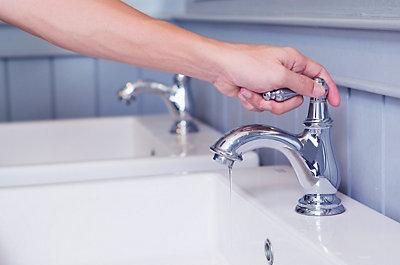Our Causes Behind Fixing a Dripping Faucet
Our Causes Behind Fixing a Dripping Faucet
Blog Article
Just about everyone is bound to have their own individual perception involving Why It's Important to Fix Leaky Faucets.

Leaking faucets may look like a small hassle, but their influence exceeds simply the annoyance of the audio. From drainage to sustaining unnecessary financial expenses and health and wellness threats, overlooking a dripping faucet can result in various effects. In this article, we'll delve into why it's essential to address this common home issue promptly and effectively.
Wastage of Water
Ecological Effect
Leaking faucets add dramatically to water wastefulness. According to the Environmental Protection Agency (EPA), a single tap leaking at one drip per second can waste greater than 3,000 gallons of water per year. This not only stress water sources but also affects ecosystems and wild animals based on them.
Step-by-Step Overview to Fixing a Dripping Faucet
Devices Required
Before trying to take care of a trickling faucet, gather the needed devices, including an adjustable wrench, screwdrivers, substitute components (such as washers or cartridges), and plumber's tape.
Typical Faucet Issues and Their Solutions
Recognize the kind of tap and the details concern creating the drip. Usual issues consist of damaged washers, rusty shutoff seats, or defective O-rings. Describe producer instructions or on-line tutorials for step-by-step guidance on repair services.
Financial Prices
Increased Water Expenses
Past the environmental effect, dripping faucets can inflate water bills considerably. The built up wastefulness over time equates right into higher energy expenditures, which can have been avoided with timely fixings.
Possible Residential Or Commercial Property Damage
Additionally, extended leaking can cause harm to fixtures and surfaces surrounding the faucet. Water accumulation can create discoloration, rust, and even structural problems if left unattended, resulting in added fixing expenses.
Health Concerns
Mold and Mildew Development
The continuous presence of dampness from a leaking faucet creates an excellent atmosphere for mold and mildew development. These fungis not just jeopardize indoor air high quality but likewise posture health and wellness threats, particularly for people with respiratory system conditions or allergies.
Waterborne Conditions
Stagnant water in leaking faucets can come to be a breeding ground for germs and various other microorganisms, boosting the threat of waterborne illness. Pollutants such as Legionella germs prosper in stagnant water, potentially leading to significant diseases when ingested or breathed in.
Do it yourself vs. Expert Repair work
Benefits and drawbacks of Do It Yourself Repair Work
While some may attempt to fix a dripping faucet themselves, do it yourself repairs include their own set of obstacles. Without appropriate understanding and tools, DIY efforts can worsen the issue or lead to insufficient repairs, lengthening the issue.
Advantages of Employing a Specialist Plumber
Employing a specialist plumber makes sure that the underlying cause of the dripping faucet is resolved efficiently. Plumbing professionals possess the expertise and equipment to identify and fix tap issues efficiently, saving time and decreasing the threat of further damage.
Ecological Duty
Specific Payment to Preservation
Taking responsibility for repairing dripping faucets aligns with broader efforts towards water preservation and ecological sustainability. Every individual's actions collectively make a significant influence on maintaining valuable resources.
Sustainable Living Practices
By focusing on timely repair work and adopting water-saving behaviors, individuals contribute to lasting living practices that profit both present and future generations.
Safety nets
Routine Upkeep Tips
To avoid dripping taps, perform regular maintenance such as cleaning up aerators, inspecting for leaks, and replacing damaged components without delay. Furthermore, take into consideration installing water-saving devices or upgrading to much more effective fixtures.
Value of Prompt Fixes
Resolving trickling faucets as soon as they're discovered stops additional water waste and prospective damages, eventually conserving both water and cash in the future.
Influence On Home Value
Perception of Well-Maintained Home
Preserving a residential property in good condition, consisting of dealing with maintenance concerns like trickling faucets, enhances its regarded value and worth amongst prospective buyers or lessees.
Influence on Resale Value
Properties with properly maintained plumbing fixtures, including faucets, command higher resale values in the realty market. Attending to trickling taps can contribute to a favorable impression during building assessments and arrangements.
Conclusion
Dealing with a leaking tap surpasses plain ease; it's an important step toward conserving water, decreasing monetary expenses, and protecting health and wellness and residential property. Whether with DIY repair work or professional assistance, doing something about it to deal with leaking faucets is a small yet impactful method to advertise liable stewardship of sources and contribute to a healthier, a lot more lasting future.
Most Common Reasons for a Leaky Faucet and How to Stop the Drip
Whether it’s your kitchen faucet leaking or a bathroom faucet leaking, one leaky faucet can waste anywhere from three to 30 gallons of water every single day. If the constant drip-drip-drip doesn’t get your attention, your water bill will. The good news is that, by following a few simple steps, chances are pretty good you can fix the problem yourself.
Why is it dripping?
Before you start taking things apart, let’s break down some of the most common causes of a leaky faucet.
Bad O-ring.
A cartridge is a valve that controls the flow of water into the faucet spout. On cartridge faucets there’s an O-ring—the little disc attached to the stem screw that holds the faucet handle in place. If it’s loose or worn-out, it can cause your sink handle to leak. Of course, the cartridge itself could be worn out. If that’s the case, make sure you replace it with the exact same kind.
Corroded valve seat.
The valve seat connects the faucet and the spout. If the leak seems to be coming from the spout, it might be because a buildup of water sediment has corroded the valve seat.
Worn-out washers or seals.
A leaky spout could be caused by a bad washer that rests against the valve seat. It’s just a matter of time before friction takes its toll. It could also be the wrong size washer or one that’s been installed incorrectly. Water sediments can also corrode inlet and outlet seals.
Water pressure.
If the faucet only drips now and then, or when you turn the handles a certain way, you should probably check your home’s water pressure.
Loose or broken parts.
The adjusting ring and packing nuts in the stream screw can become loose over time, causing your sink handle to leak. Try tightening or replacing the packing nut. If the leak is coming from the pipes underneath the sink, you probably have a broken pipe or fitting. If that’s the case, you should definitely call a plumber.
Know your faucet.
Faucets come in a variety of types. Each one has its own assembly—and its own possible causes of leaks. Learning about the four most common kinds of faucets will help you know how to take them apart and make any repairs.
How to stop a leaky faucet
Fixing that leaky faucet doesn’t have to take a lot of time, money, or expertise. It’s usually a simple matter of replacing a worn-out washer or gasket, a loose O ring, or another part. Chances are really good you can do this yourself if you follow these simple steps.
Shut off the water.
Before you tackle the faucet, cut off the water supply to the sink. There should be one valve for hot and one for cold. Hand-turn them clockwise with your hands till they close. If there are no valves under the sink, head to the basement and shut off the main water supply to the house. Then turn on the faucet until it empties out the water that’s still in the line and you’re ready to start. It’s a good idea to cover the sink drain with a plug or a rag so you don’t lose any small pieces and parts while you’re working.

As a devoted person who reads about , I was thinking sharing that piece of content was essential. If you enjoyed reading our blog entry plz do not forget to pass it around. Thank you for your time. Come back soon.
Report this page